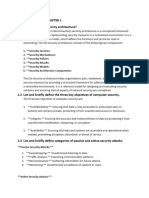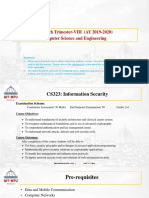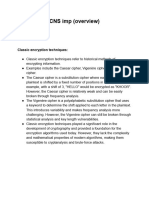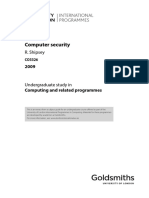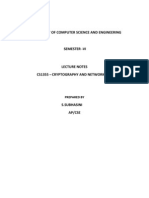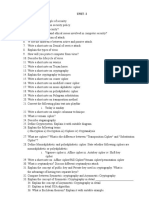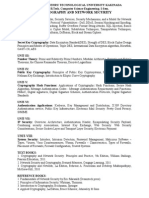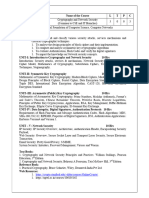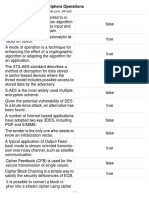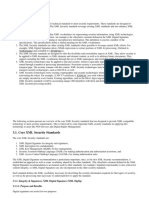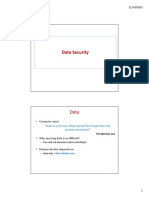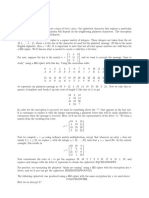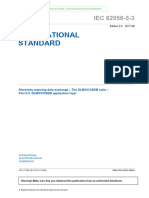0% found this document useful (0 votes)
25 views7 pagesNetwork Security and Cryptography Notes Full
The document provides detailed notes on network security and cryptography, covering topics such as security attacks, cryptographic techniques, and various encryption methods like DES and AES. It also discusses cryptanalysis, hash functions, and security standards, along with practical applications in authentication and secure communication. Additionally, it addresses system security measures, intrusion detection, and prevention systems.
Uploaded by
shutupaaryaaCopyright
© © All Rights Reserved
We take content rights seriously. If you suspect this is your content, claim it here.
Available Formats
Download as PDF, TXT or read online on Scribd
0% found this document useful (0 votes)
25 views7 pagesNetwork Security and Cryptography Notes Full
The document provides detailed notes on network security and cryptography, covering topics such as security attacks, cryptographic techniques, and various encryption methods like DES and AES. It also discusses cryptanalysis, hash functions, and security standards, along with practical applications in authentication and secure communication. Additionally, it addresses system security measures, intrusion detection, and prevention systems.
Uploaded by
shutupaaryaaCopyright
© © All Rights Reserved
We take content rights seriously. If you suspect this is your content, claim it here.
Available Formats
Download as PDF, TXT or read online on Scribd
/ 7





